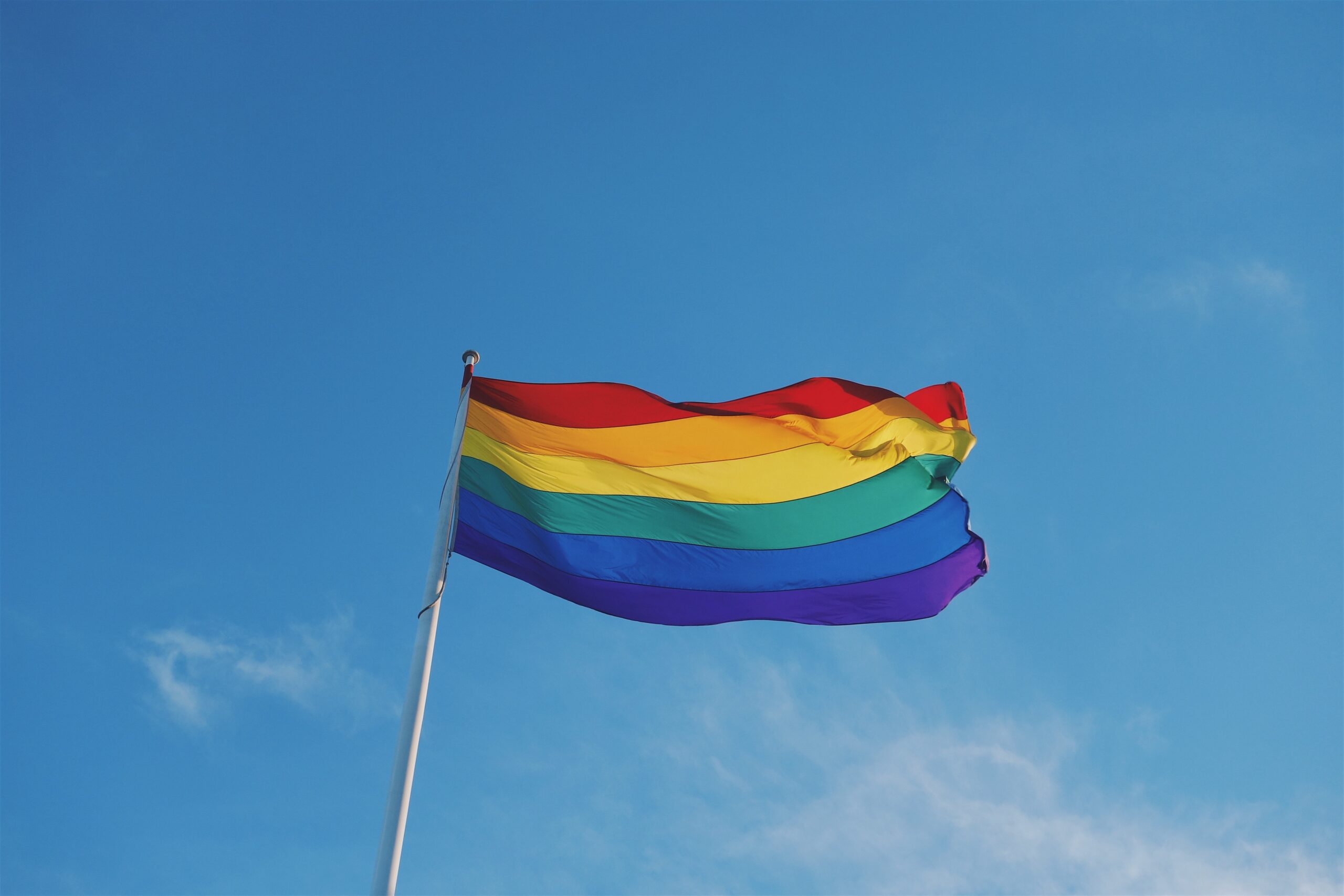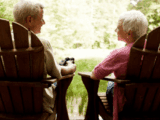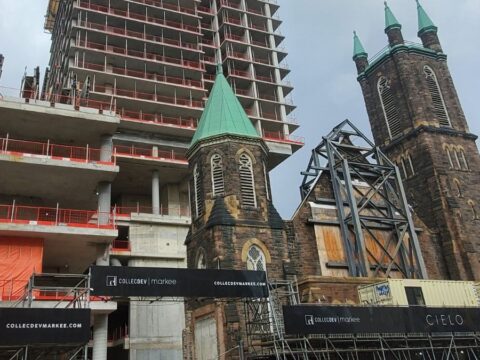Not long after the United Church’s General Council decided in 1988 that all were eligible for ministry regardless of sexual orientation, about 30 families left the congregation at Edmonton’s Mill Woods United in protest. Last month, after about three years of committee meetings, study groups and collective soul-searching, the same church voted by a comfortable majority to become an “Affirming” congregation: one that officially and actively welcomes and supports people of all sexual orientations.
Today, gay-friendly rainbow flags are emblazoned on the congregation’s signboard and website. Its mission statement, framed and displayed alongside the Sunday-morning greeters, declares Mill Woods’ love and welcome for “all persons, regardless of age, gender, race, sexual orientation, differing abilities, ethnic background or economic circumstance.”
You may unsubscribe from any of our newsletters at any time.
With examples like this one, you’d be forgiven for thinking that the United Church of Canada has finally moved well beyond the turbulent sexual orientation debate of nearly 20 years ago. Add other evidence, such as the Emerging Spirit campaign’s use of a same-sex wedding cake in its advertising, as well as the United Church’s recent public support for same-sex marriage in Canada, and you might even think that the movement to welcome gay, lesbian, bisexual and transgender people — GLBT for short — was taking the church by storm. In fact, only 31 United Church congregations (as well as three regional ministries, three retreat centres and two colleges) now officially call themselves Affirming. It’s a tiny portion of the United Church’s 3,500 congregations — less than one percent.
Yet the movement perseveres. “I believe we have moved a long way. It’s growing, but when you see there are 3,500 churches, we have a way to go,” admits Rev. Sally Harris, co-chair of Affirm United.
Spawned 25 years ago as a support group for United Church gays and lesbians (and later bisexual and transgender people), Affirm United is also an education and advocacy group on sexual orientation issues. Affirm rose to prominence during the tumultuous lead-up and aftermath of the church’s 1988 decision to allow the ordination and commissioning of people of all sexual orientations. In 1992, to help GLBT churchgoers and clergy know where they would be welcomed, Affirm established a set of criteria that churches had to meet if they wished to be called “Affirming.”
The total number of churches involved in the Affirming process right now across the country is unclear — Affirm United doesn’t keep track. Furthermore, the number of congregations working toward a better welcome for GLBT people outside of Affirm’s official process is unknown. But Southminster-Steinhauer United, Alberta’s first Affirming congregation, hosted a one-day workshop last fall that drew delegates from 17 area congregations; as many as five of them are expected to vote on becoming Affirming this year. And Affirm United reports “a lot of queries” about the process.
As an organization, Affirm relies on volunteers and operates on a budget of $21,000, raised from membership fees, donations and a $1,000 annual grant from General Council. Last year, General Council kicked in an additional $5,000 to help pay for a video about two Affirming congregations, which aired on the church’s Spirit Connection television show.
In February, for the first time, Affirm United’s executive council held its annual meeting at the General Council offices in Toronto. The General Council’s justice, global and ecumenical relations unit was meeting there at the same time and invited Affirm’s co-chairs to lead discussions at one of its sessions.
The Affirming movement is gaining mainstream credibility within the United Church, and garnering strength as a result. “It feels like we are journeying together now, with the United Church,” says Harris, who is also the minister at Vancouver’s Trinity United, an Affirming congregation that has made Harris, her lesbian partner and their five children feel at home. “I don’t think we (Affirm United) need to be as strident as in time past, but we still have to be persistent. . . . I believe we have moved a long way, but we still have a long way to go.” More and more congregations are learning from those who have gone before them that the Affirming process can be enriching, widening, arduous, divisive or all of the above.
The process of becoming an Affirming ministry usually begins when interested individuals in a congregation start a committee. It can take anywhere from one to 10 years, but as Affirm official Rev. Liz Carter, minister of the Gainsborough-Carievale (Sask.) pastoral charge, puts it: “I’d be nervous if a church worked it out in less than a year. . . . It’s a time of exploring and considering the values of the church. It should not be an easy process.”
To become Affirming, a congregation must:
* adopt a mission statement indicating it is inclusive of all people and specifically naming sexual orientation and gender identity;
* set a plan of action for continuing Affirming work; and
* become a member of Affirm United, at a cost of $100 per year.
Affirm also requires congregations to hold a public celebration marking the event. Often, says Affirming Ministries committee co-chair and Saskatchewan Conference staffperson Brian Mitchell-Walker, that’s the “biggest hang-up. . . . But, think about it, if you’re not prepared to make it known outside your congregation, maybe you’re not ready.” The whole process may sound like a lot of red tape, but the benefit of becoming an officially Affirming church is that a “gay or lesbian couple can feel safe coming into that church,” says Carter, and know the congregation “is actively trying to welcome them.” Plus, Affirming churches are listed on Affirm United’s website (www.affirmunited.ca), a resource for seekers.
Parkminster United in Waterloo, Ont., spent a year and a half on its Affirming ministry project, what Rev. Elizabeth Eberhart-Moffatt calls “a wonderful journey.” But it wasn’t without bumps. Some in the congregation felt “that the Affirming committee members had made up their minds and they were forcing their opinions on people.”
In an age of political correctness, it was difficult for opponents to voice their discomfort with sexual diversity, so they disputed the committee’s approach instead, says Eberhart-Moffat. “People didn’t want to speak out against the gay community.”
The congregation’s Affirming committee wanted at least a two-thirds majority; when the votes were tallied last fall, they got the support they’d hoped for, but just barely. Only 67 percent voted in favour of the proposal. “We expected it to be much higher,” says Eberhart-Moffatt. Parkminster has postponed the public celebration that will finalize its qualification as an Affirming congregation. Says Eberhart-Moffatt, “I think we’re trying to be respectful about how close the vote was.”
At Bedford (N.S.) United, one of only two Affirming congregations in Maritime Conference, Rev. David Hart says opponents also disputed the Affirming process rather than directly debating sexual orientation issues. The congregation’s 2005 vote was limited to members and sparked a drive that welcomed close to 70 adherents into full church membership. About 70 percent voted in favour of becoming Affirming.
When Rev. Susan Ivany arrived at Westminster United in Thunder Bay, Ont., in 2001, she was asked to help the congregation complete the Affirming ministry process it had begun four years earlier. Last fall, following several years of meetings and discussions, the congregation voted to become an Affirming ministry by an overwhelming majority. A new, more inclusive mission statement (“We kind of pirated it from an existing one,” says Ivany with a laugh) is prominently displayed on the wall of the sanctuary, in the weekly worship bulletin, on church letterhead and in cards sent to shut-ins and people in hospital.
“It enables us to live the Gospel that we proclaim,” says Ivany. “We proclaim the love of Christ and we proclaim that God’s love is for all. And by being an inclusive and welcoming community we back that up with our actions.”
The discussion process raised questions about inclusion that went way beyond sexual orientation. For example, people with physical disabilities have difficulty accessing Westminster’s sanctuary and some asked whether Westminster’s worship style was accessible and inclusive to seekers. Says Ivany, “There’s more to becoming an Affirming church than just putting up the sign.”
Clearly, the United Church overall is making progress in welcoming people of all orientations. In contrast to its earlier years, Affirm works openly: organizers and contact information are listed on its website. Yet some remain wary. One Affirm executive member asked not to be named in this story, fearing family upset. Others weren’t sure about having personal details published. To date, all but two of the Affirming congregations are in cities, and no rural church has taken up the flag. Mitchell-Walker says while many rural churches are “very open and accepting of people in the congregation . . . to make that public declaration is a really hard piece, when everybody knows one another.” And, according to a 1999 report, many openly lesbian and gay ministers struggle to find congregations or pastoral charges that will accept them.
Still, there is cause for optimism. Mitchell-Walker believes that the church is a much safer and more comfortable place for lesbians and gays today. He recalls serving on a high-level consultation in the wake of the United Church’s 1988 decision on sexual orientation and ministry. At the time he was a teacher in Toronto and asked to be publicly referred to as `Mr. X.’ “I’d never do that again,” he says today. Mitchell-Walker, his partner and their two adopted children have had “great support from the congregations we’ve been part of, and continue to do so at the congregation where my husband is minister.” Their current church home is starting to look into the Affirming process.
At Edmonton’s Southminster-Steinhauer United, the Lesbian/Gay Fellowship group is listed on the congregation’s website along with the book club, healing group, men’s breakfast and women’s weekend groups. Affirm committee member Lois Evans says becoming Affirming has attracted many new members, “wonderful people” who might otherwise have avoided church. As for public reaction, so far the church hasn’t received any negative feedback. “We did expect that might be possible,” she says.
At Westminster United in Thunder Bay, Ivany hasn’t heard much community comment, but “we’re still considered, without question, the most liberal church in the city.” And at Waterloo’s Parkminster United, Eberhart-Moffatt is trying to reassure the third of the congregation who voted against becoming Affirming that welcoming GLBT people into the life of the church won’t change the foundations of the faith. “Our spiritual life as a congregation still holds,” she says.
As for Edmonton’s Mill Woods United, Affirming committee member Linda Baker realizes the move won’t make a huge immediate change. “We have our symbols, we have our signs. We are signalling to the community that this is what we stand for. We are hopeful that we will get more people.”
In the meantime, she says, “It’s just the right thing to do. It’s wrong to exclude people. That’s the bottom line.”
This story originally appeared in the April 2007 issue of The Observer with the title “Raising the rainbow-coloured flag.”














